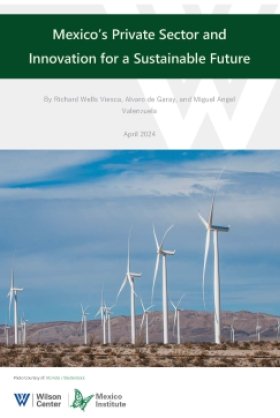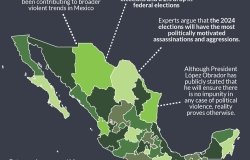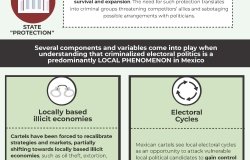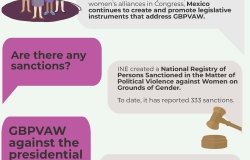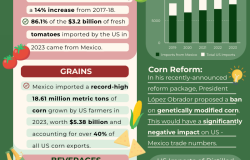The Mexico Institute on the Ground in Tepito


During a recent trip to Mexico City, members of the Mexico Institute team visited the neighborhood of Tepito, notorious home to Mexico’s largest informal market and the source for pirated goods sold throughout the Mexico City region. It is said that the market is tended to by about 20,000 vendors at a time, during the holiday season however, its stalls and puestos can swell to over 40,000 vendors. Mexico’s informal market makes up an estimated 33% of the total economy.
To simply label Tepito an informal market is a misnomer. The Tepiteños are very organized; the community is represented by citizen organizations and appoints members to act as interlocutors with police and authorities, make decisions regarding market infrastructure and arbitrate disputes over space. In addition, support in the barrio tends to coalesce around Lideres who represent the interest of members of this group in the local government as delegados.
Vendors are very aware of the market in which they operate, offering a diverse set of products pegged to market needs. During our visit, Christmas trees and ornaments were on display. A visitor in September might see Mexican flags in honor of the country's Independence Day. In the rainy season umbrellas are sold with greater frequency. Experts we spoke with indicated that vendors might change the products they sell multiple times a year, and emphasized how this flow of merchandise is part of the global movement of goods. Initially Tepito was dependent on the Fayuca or contraband from the U.S. market, leading to the stores popping up in Texas and California with ties to the neighborhood. However, the tightening of border infrastructure has since changed these informal trade dynamics. Our interviews with experts and vendors revealed the success of countries like China and Korea that have successfully broken into this market.
These international linkages are well developed and established. Travel agencies from Asia offer tours that fly Mexicans to factories and introduce them to the source markets where they can obtain goods. Many of the products sold in Tepito arrive first in Belize, often as legal commerce, before making way their way to Mexico. When asked if Mexicans who travel to China speak Chinese one vendor stated “I don’t know if they speak Chinese, but they speak Mandarin, which is what they speak over there.” These ties are so deep that Koreans and Chinese immigrants have settled in Tepito becoming wholesalers for other vendors in the area. They are able to provide products at reduced prices when they are unavailable from domestic sources. In addition, entrepreneurial spirit abounds in Tepito, so much so that those individuals with connections to China have begun designing their own products with unique logos and branding.
Despite these international influences the neighborhood has retained its individualized nature. One community leader we encountered spoke about the neighborhood’s pride and cast a stark divide between those living and working in the community. He recalled a time when Chinese immigrants had arrived to Tepito and attempted to buy a large tract of shops being rebuffed immediately by the neighborhood. “Those who sell here are known as Tepiteros while we (describing those who were raised and live in the community) are known as Tepiteños.” The leader estimated that up to 95 percent of these vendors were Tepiteros. It would seem that despite a fluid and ever changing market for illicit goods the saying of Tepito holds true. “En Tepito se vende todo menos la dignidad” “In Tepito we sell everything, except our dignity.”
Miguel R. Salazar is the Public Affairs Specialist at the Mexico Institute of the Woodrow Wilson International Center for Scholars.
Allison M. Cordell is the Program Assistant at the Mexico Institute of the Woodrow Wilson International Center for Scholars.
About the Authors

Mexico Institute
The Mexico Institute seeks to improve understanding, communication, and cooperation between Mexico and the United States by promoting original research, encouraging public discussion, and proposing policy options for enhancing the bilateral relationship. A binational Advisory Board, chaired by Luis Téllez and Earl Anthony Wayne, oversees the work of the Mexico Institute. Read more


